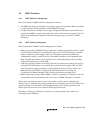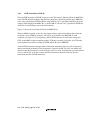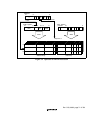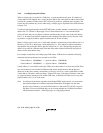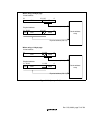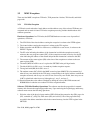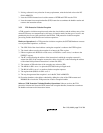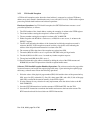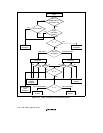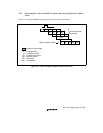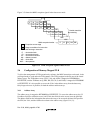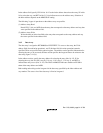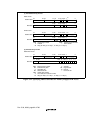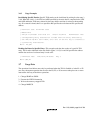
Rev. 5.00, 09/03, page 77 of 760
3.5.4 Initial Page Write Exception
An initial page write exception results in a write access when the virtual address and the address
array of the selected TLB entry are compared and a valid entry with the appropriate access rights
is found to match, but the D (dirty) bit of the entry is 0 (the page has not been written to). Initial
page write exception processing includes both hardware and software operations.
Hardware Operations: In an initial page write exception, the SH7709S hardware executes a set
of prescribed operations, as follows:
1. The VPN field of the virtual address causing the exception is written to the PTEH register.
2. The virtual address causing the exception is written to the TEA register.
3. Exception code H'080 is written to the EXPEVT register.
4. The PC value indicating the address of the instruction in which the exception occurred is
written to the SPC. If the exception occurred in a delay slot, the PC value indicating the
address of the related delayed branch instruction is written to the SPC.
5. The contents of SR at the time of the exception are written to SSR.
6. The MD bit in SR is set to 1 to place the SH7709S in the privileged mode.
7. The BL bit in SR is set to 1 to mask any further exception requests.
8. The register bank (RB) bit in SR is set to 1.
9. The way that caused the exception is set in the RC field in MMUCR.
10. Execution branches to the address obtained by adding the value of the VBR contents and
H'00000100 to invoke the user-written initial page write exception handler.
Software (Initial Page Write Handler) Operations: The software must execute the following
operations:
1. Retrieve the required page table entry from external memory.
2. Set the D bit of the page table entry in the external memory to 1.
3. Write the value of the PPN field and the PR, SZ, C, D, SH, and V bits of the page table entry
in the external memory to the PTEL register.
4. If using software for way selection for entry replacement, write the desired value to the RC
field in MMUCR.
5. Issue the LDTLB instruction to load the contents of PTEH and PTEL into the TLB.
6. Issue the RTE instruction to terminate the handler and return to the instruction stream. The
RTE instruction should be issued after two LDTLB instructions.
Figure 3.11 shows the flowchart for MMU exceptions.



